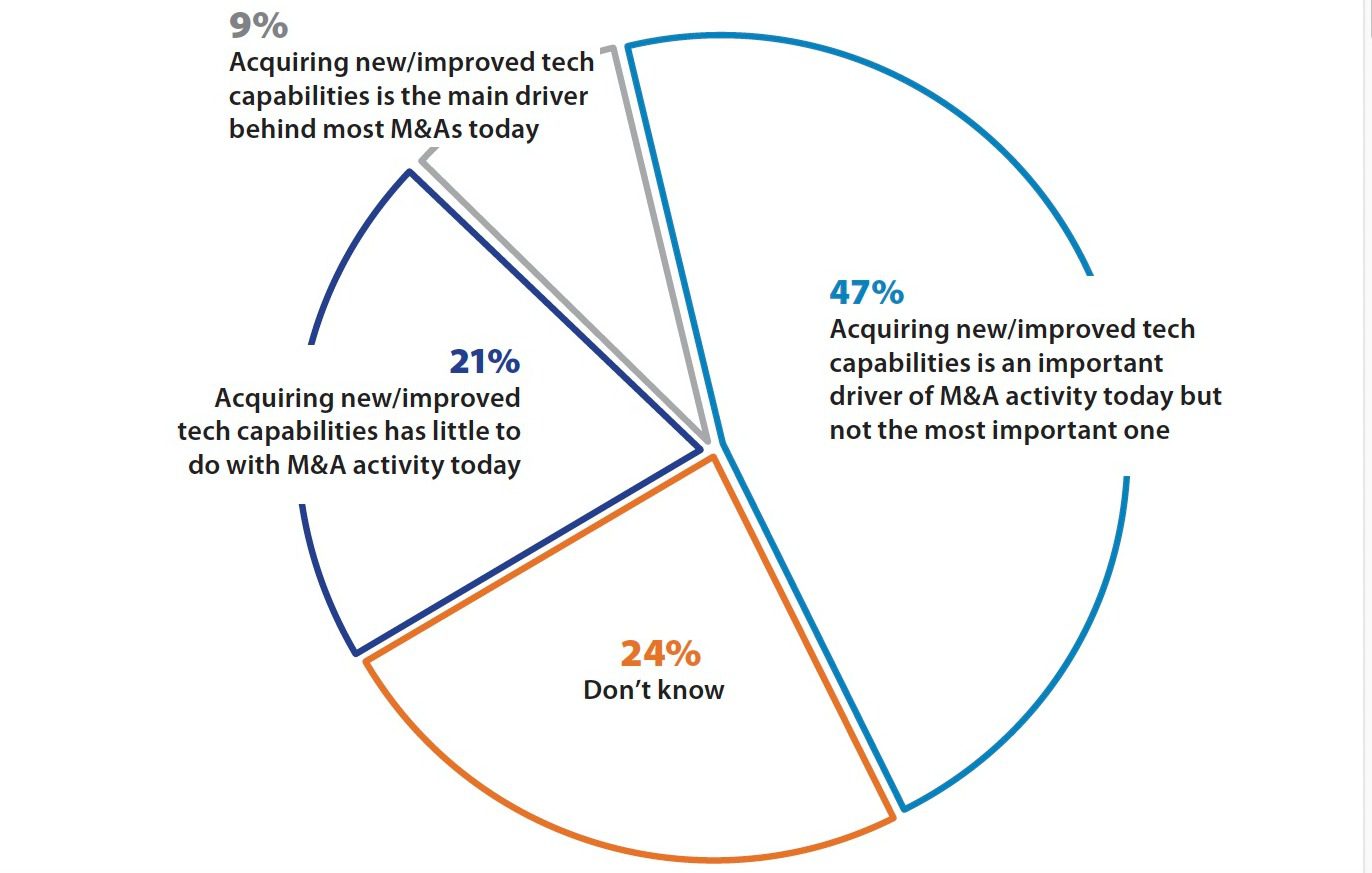With technology playing such a critical role in organizations’ success or failure, one might think IT would be a chief concern in M&A due diligence—but it turns out the opposite is true. A January survey of CEOs, conducted by Chief Executive and Elliott Davis, found that only 9% of respondents believe an acquisition target’s tech capabilities is a critical driver of M&A, while 21% said technology had little to do with deal-making.
“That was very surprising,” says Jimmy Buddenberg, Digital Practice Leader for Elliott Davis, who explains why companies that fail to do IT due diligence miss out on key synergy opportunities and risk taking on ‘IT debt’ or other tech vulnerabilities unwittingly. At a minimum, IT is a potential indicator for how well or how poorly the business is run. “As you go through the deal process, you’re trying to understand more about the organization, and this is one more data point for a buyer to assess the maturity and health of the organization.”
Capitalize on synergies
By not understanding clearly what they’re purchasing from an IT perspective, the acquirer often loses out on efficiencies the deal might have driven. “Then post-merger, they tend to leave the two isolated and standalone instead of integrating,” says Buddenberg, who estimates the cost savings of proper integration would be 20%, at a minimum.
“There’s definitely an opportunity for an organization to develop an overarching IT strategy that includes integration. So, are you going to standardize on an ERP system across the board? Are you going to standardize on hardware? Are you going to move to the cloud? They should be thinking about how they’re going to integrate before they even close the deal—that’s going to drive the level of diligence that they need to do.”
It will also drive decisions about which organization’s technology will absorb the other’s. “Don’t necessarily assume that you want to conform the new organization to your existing [platform] because the new organization might actually have something better,” says Buddenberg. “When you acquire a modernized environment, that’s something you should be leveraging.”
To that end, talent should also be a part of the diligence discussion because you may be bringing on tech employees with unique skills that would benefit a transformation you’re undertaking; you might also have the opportunity to expand the role of certain IT managers at either company, which could help with retention. On the flip side, you will also find out if the combined technology staff is too lean to support an integration project. “That’s when you would want to bring in a fractional CIO or other outside resources,” he says.
Understand the tech-related risks
Buddenberg recalls working with a healthcare company that did an acquisition and shortly after closing suffered a breach because of security gaps in the technology of the acquired company. “It was something that should have been caught during a diligence process, but wasn’t,” he says. “You [as the acquirer] are responsible on Day 1 for the cybersecurity posture of the new organization. Insurance will help with the cost but it’s not going to help you with the reputational damage and the potential loss of clients.”
Seeing under the tech hood of the target company will also allow the acquirer to get a sense of any ‘technology debt’ they might be inheriting, which will give them some leverage to adjust the purchase price. “For example, if we know we’re going to have to invest $500,000 in this company, then let’s talk about that from a price perspective,” he says.
But Buddenberg notes that an acquiring company should not plan to bring in a firm like Elliott Davis too early in the process. “First you want to look at EBITDA, make sure the financials are in reasonable order—so really, right after quality of earnings. We’re not the first call,” he says, “but we’re probably the second call.”
























































![Key Metrics for Social Media Marketing [Infographic] Key Metrics for Social Media Marketing [Infographic]](https://www.socialmediatoday.com/imgproxy/nP1lliSbrTbUmhFV6RdAz9qJZFvsstq3IG6orLUMMls/g:ce/rs:fit:770:435/bG9jYWw6Ly8vZGl2ZWltYWdlL3NvY2lhbF9tZWRpYV9yb2lfaW5vZ3JhcGhpYzIucG5n.webp)


















